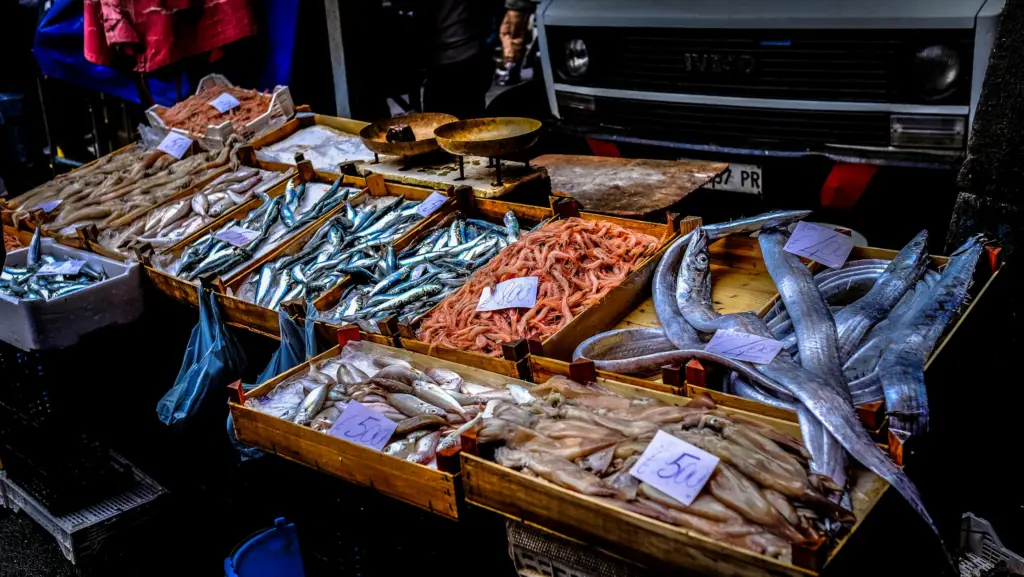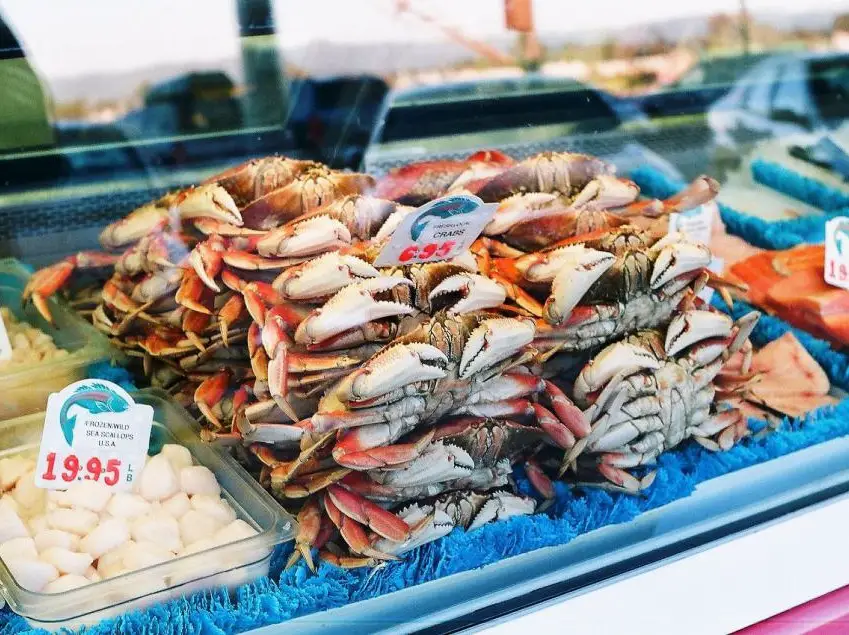Table of Contents
Seafood can go bad quickly. Usually, it lasts a few days at most.
The exact time depends on storage and type. Fresh seafood is delicious and nutritious. But, it is also delicate and spoils fast. Knowing how long seafood can stay good helps prevent foodborne illness. Proper storage is key to keeping seafood fresh longer.
Whether it’s fish, shrimp, or clams, each type has its own shelf life. In this blog, we will explore how long different types of seafood can last. We will also share tips on how to store seafood to maximize freshness. This way, you can enjoy your seafood safely and avoid waste. Keep reading to learn more about keeping your seafood fresh and tasty.
Factors Affecting Freshness
Seafood is a popular choice for many meals due to its rich flavors and numerous health benefits. However, it is also one of the most perishable foods. Knowing how long it takes for seafood to go bad is crucial for maintaining food safety and avoiding health risks. Several factors affect the freshness of seafood, including temperature and the type of seafood.
Temperature Influence
Temperature plays a significant role in the freshness of seafood. Proper refrigeration is essential to slow down bacterial growth and extend the shelf life of fish. Here are some key points:
- Seafood should be stored at a temperature below 40°F (4°C).
- Refrigerate seafood as soon as possible after purchase.
- Freezing seafood can extend its shelf life significantly.
Here’s a simple table to understand the storage times:
| Seafood Type | Refrigerated (Below 40°F) | Frozen (0°F or Lower) |
|---|---|---|
| Fish | 1-2 Days | Up to 3 Months |
| Shrimp | 1-2 Days | Up to 6 Months |
| Crab | 3-5 Days | Up to 6 Months |
Following proper seafood storage guidelines ensures you enjoy fresh and safe seafood. Always check expiration dates and follow food safety guidelines.
Type Of Seafood

The type of seafood also affects how long it stays fresh. Different seafood items have varying shelf lives. Here are some examples:
- Fish: Most fish varieties, like salmon and cod, last 1-2 days in the refrigerator.
- Shellfish: Items like shrimp and crab have a similar shelf life of 1-2 days when refrigerated.
- Oysters and Mussels: These should be consumed within 1-2 days for best quality.
Understanding the shelf life of different seafood types helps in planning meals and preventing food waste. Here’s a quick guide:
| Seafood Type | Refrigerated Shelf Life |
|---|---|
| Fish (e.g., Salmon, Cod) | 1-2 Days |
| Shrimp | 1-2 Days |
| Crab | 3-5 Days |
| Oysters | 1-2 Days |
| Mussels | 1-2 Days |
Always ensure seafood is fresh before cooking. Check for signs of spoilage like off smells or slimy textures. Following these tips will help you enjoy the best seafood freshness every time.
Signs Of Spoilage
Seafood can be a delicious and nutritious choice. But how long does it take for seafood to go bad? Knowing the signs of spoilage is crucial to avoid foodborne illnesses. Proper seafood handling, including understanding expiration dates for seafood and seafood storage tips, can help ensure your seafood stays fresh longer. This guide will help you identify spoiled seafood signs through smell indicators and visual cues.
Smell Indicators
One of the first signs of spoiled seafood is its odor. Fresh seafood should have a mild, ocean-like scent. If the seafood has a strong, unpleasant smell, it is likely spoiled. Here are some common seafood odors that indicate spoilage:
- Ammonia-like smell – This is a clear sign that the seafood is no longer safe to eat.
- Strong fishy odor – While some fish naturally have a stronger scent, an overpowering fishy smell usually means spoilage.
- Sour or rancid smell – These odors indicate bacterial growth and should not be ignored.
Proper seafood handling can help prevent these odors. Always store seafood at the right temperature. Follow seafood storage tips to maintain its freshness. Check expiration dates for seafood regularly. By being mindful of these practices, you can reduce the risk of consuming spoiled seafood.
Visual Cues
Visual cues are also important in identifying spoiled seafood. Fresh seafood should look moist and vibrant. Here are some visual signs to watch for:
- Discoloration – Seafood discoloration, such as yellowing or browning, is a sign of spoilage.
- Slime – A slimy texture on the surface indicates bacterial growth.
- Dullness – Fresh seafood should have a shiny appearance. A dull or dry look suggests it is past its prime.
Seafood freshness can also be determined by examining the eyes and gills of fish. Clear, bright eyes and red gills are indicators of fresh fish. Cloudy eyes and pale gills suggest spoilage.
By paying attention to these visual cues, you can better ensure food safety and avoid foodborne illness risks. Remember, seafood shelf life varies, so always check for spoiled seafood signs before consumption.
Storage Tips

Seafood is a delicate food item that can spoil quickly. Understanding Seafood Storage Tips can help keep it fresh longer. Proper Seafood Handling is crucial to prevent foodborne illnesses. This article will guide you on how long it takes for seafood to go bad, focusing on refrigeration and freezing.
Refrigeration Guidelines
Refrigeration is key to maintaining Seafood Freshness Indicators. Always store seafood in the coldest part of your fridge. Typically, fish lasts for about 1-2 days in the fridge. Shellfish like shrimp and crab can last up to 2 days. Here are some Refrigeration Guidelines:
- Keep the fridge temperature at or below 40°F (4°C).
- Store seafood in a sealed container or a plastic bag.
- Place seafood on a plate to catch any leaks.
Understanding Seafood Expiration Dates is essential. Always check the sell-by date. If seafood smells sour or has a slimy texture, it’s a sign of spoilage. Regularly inspecting for Spoilage Signs In Seafood helps ensure safety.
Here’s a quick reference table for Refrigerated Seafood Duration:
| Seafood Type | Refrigeration Duration |
|---|---|
| Fish | 1-2 days |
| Shrimp/Crab | 2 days |
| Clams/Mussels | 1-2 days |
Freezing Best Practices
Freezing seafood can extend its Seafood Shelf Life. Fish can be frozen for up to 6 months. Shellfish can be frozen for up to 3 months. Follow these Freezing Best Practices:
- Wrap seafood tightly in plastic wrap and then in aluminum foil.
- Label packages with the date before freezing.
- Keep freezer temperature at or below 0°F (-18°C).
Proper Seafood Handling during freezing helps prevent Bacterial Growth In Seafood. Always thaw seafood in the fridge, not at room temperature. Quick thawing can lead to bacteria multiplying. Here’s a table for Frozen Seafood Longevity:
| Seafood Type | Freezing Duration |
|---|---|
| Fish | Up to 6 months |
| Shrimp/Crab | Up to 3 months |
| Clams/Mussels | Up to 3 months |
Following these Food Safety Guidelines ensures your seafood remains fresh. Remember, always monitor for Spoilage Signs In Seafood to maintain quality and safety.
Safe Consumption Periods
Seafood is a delicious and nutritious choice for many meals. But knowing how long seafood stays fresh is crucial. Safe consumption periods help avoid foodborne illnesses. Proper Seafood Handling and Refrigerated Seafood Storage are vital.
General Timeframes
Seafood Shelf Life varies based on storage methods. Freshness Indicators and Spoilage Signs help determine if seafood is safe to eat. Generally, seafood lasts:
- Fresh fish: 1-2 days in the refrigerator
- Cooked fish: 3-4 days in the refrigerator
- Frozen fish: 3-6 months in the freezer
- Fresh shellfish: 1-2 days in the refrigerator
- Cooked shellfish: 3-4 days in the refrigerator
- Frozen shellfish: 3-6 months in the freezer
Temperature Control For Seafood is essential. Seafood must be stored at 40°F or below in the refrigerator. In the freezer, keep it at 0°F.
Seafood Expiration Dates should be checked regularly. Follow Food Safety Guidelines to ensure you are consuming safe seafood.
Specific Seafood Types
Different types of seafood have unique storage times. Here is a table with specific seafood types and their safe consumption periods:
| Seafood Type | Refrigerated Storage | Frozen Storage |
|---|---|---|
| Salmon | 1-2 days | 3-6 months |
| Tuna | 1-2 days | 3-6 months |
| Shrimp | 1-2 days | 3-6 months |
| Crab | 1-2 days | 3-6 months |
| Scallops | 1-2 days | 3-6 months |
Cooking Seafood Recommendations can also affect how long it stays fresh. Always cook seafood to an internal temperature of 145°F. Seafood Preservation Methods such as freezing and refrigerating play a big role in extending Seafood Shelf Life.
Regularly check for Spoilage Signs. If seafood smells bad or looks discolored, discard it. Proper Seafood Handling ensures that you enjoy seafood safely.
Frequently Asked Questions
How Fast Does Seafood Go Bad?
Seafood goes bad quickly. Refrigerate it within 2 hours of purchase. Consume within 1-2 days for best quality. Frozen seafood lasts 3-6 months. Always check for foul odor or slimy texture before eating.
How Long Can Seafood Sit Out Before It Goes Bad?
Seafood can sit out for up to 2 hours at room temperature. In hot weather, limit it to 1 hour.
Is It Safe To Eat Seafood After 4 Days?
Seafood is generally not safe to eat after 4 days. Freshness and proper storage are crucial. Consume within 1-2 days for best quality.
How Can You Tell If Seafood Is Bad?
Check for a strong fishy smell. Look for slimy texture, discoloration, or cloudy eyes. Ensure firm, not mushy flesh.
Conclusion
Seafood spoils quickly if not stored properly. Freshness is crucial. Always check dates and smells. Store seafood in the coldest part of your fridge. Use it within two days. Frozen seafood lasts longer. Thaw it safely in the fridge. Never leave seafood out for too long.
Stay aware of changes in texture and color. A little care ensures your seafood stays safe and tasty. Enjoy fresh seafood for a healthy meal.


